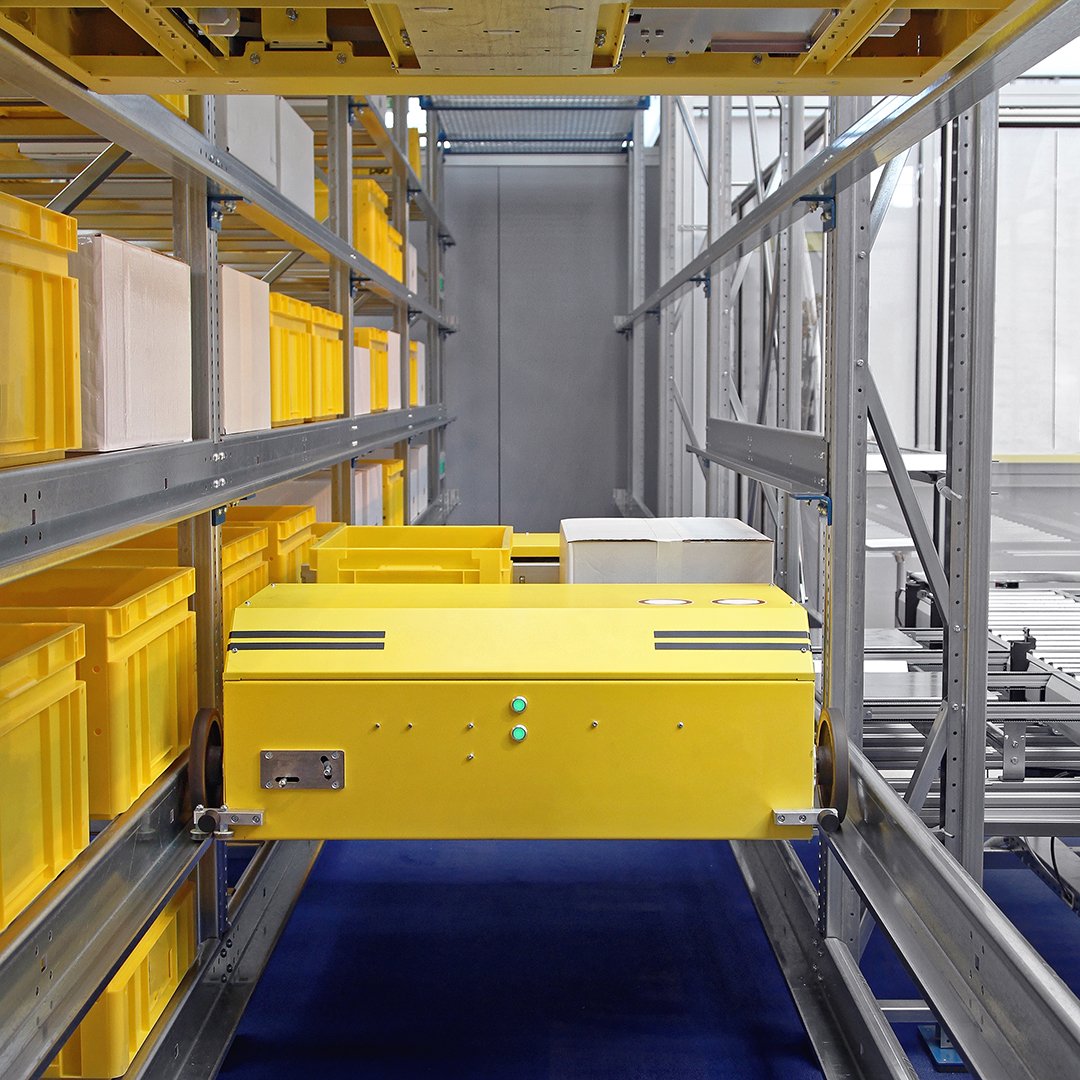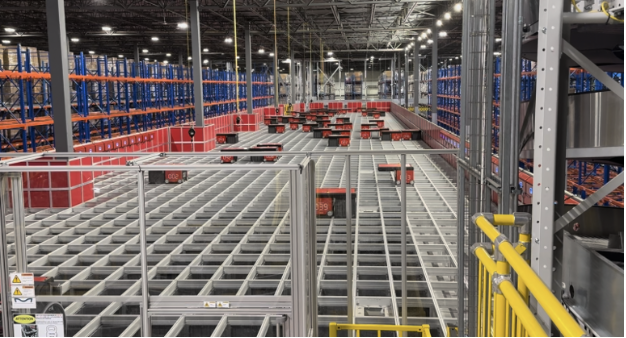- Home
- Services
- Conceptual Design
- Digital Twin Simulation & Emulation
- Manufacturing Flow Design
- Maveneer WxS™
- MavenSHIELD™
- Operational Assessment
- Operational Augmentation
- Process Standardization & Compliance
- Retrofit Design & Modernization
- Supply Chain & Inventory Management
- Supply Chain Network Analysis & Optimization
- Systems Integration
- Warehouse Optimization & Performance Monitoring
- WMS & WES Selection & Strategy
- Workforce Training & Development
- 3D Integrated Modeling
- Industries
- Solutions
- Autostore
- Automated Print and Apply
- Automation as a Service
- Autonomous Mobile Robots
- Automated Guided Vehicles
- Automated Storage & Retrieval Systems (AS/RS)
- Control System Integration
- Conveyor Systems
- Packaging Automation
- Palletizing
- Depalletizing
- Sortation Systems
- Microfulfillment
- Omnichannel Fulfillment
- eCommerce Fulfillment
- Order Picking
- Robotic Vision Systems
- Warehouse Execution Systems
- Warehouse Storage Racking Solutions
- Resources
- Company
Goods-to-Person Automation Guide
Maveneer partners with trusted GTP manufacturers to bring the benefits of automation to your warehouse:










Goods-to-Person (GTP) Order Fulfillment Guide
What is Goods-to-Person (GTP) Picking?
Goods-to-Person (GTP) picking is a warehousing and order fulfillment strategy that focuses on maximizing the efficiency of the picking process. Unlike traditional methods where operators traverse the warehouse aisles to pick or replenish items, GTP reverses the roles. In this approach, items are brought to the operators, reducing the time spent searching for products and increasing overall productivity.
Automations Used in GTP Picking
The success of Goods to Person picking relies heavily on automation technologies. Two primary categories of automation solutions are used in GTP picking: fixed solutions and mobile solutions. Let's explore each of these categories of automations:
Fixed Solutions
1. Cranes/Unit Load AS/RS:
Cranes are commonly used for handling larger loads, such as pallets or boxes. They offer high-speed retrieval and are ideal for large warehouses with heavy products. The benefits of cranes & unit-load automation include:
- Heavy Load Handling: Cranes are well-suited for handling heavy loads, such as pallets or large containers, making them ideal for warehouses with substantial products.
- High-Speed Retrieval: Cranes offer fast and efficient retrieval of items, contributing to shorter order fulfillment times and improved overall warehouse productivity.
- Optimized Vertical Space: Like AS/RS systems, cranes make effective use of vertical space, allowing for the storage of bulkier items without sacrificing floor space.
- Customizable Solutions: Crane systems can be tailored to meet specific warehouse requirements and space constraints, ensuring optimal performance and adaptability.

2. Shuttle/Mini-Load AS/RS
Shuttle systems use robotic shuttles to transport items within the storage structure. These shuttles move horizontally and vertically to access items efficiently. They are well-suited for high-density storage applications. Benefits of Shuttle/Mini-Load AS/RS include:
- High Throughput: Shuttle systems excel in high-throughput environments, where they can rapidly move items within the storage structure, facilitating faster order processing.
- Flexible Configuration: Shuttle systems are adaptable to various storage configurations and can be customized to accommodate different types of products and shelving systems. They can also utilize extended vertical space, improving the storage density.
- Reduced Labor: By automating the retrieval process, shuttle systems significantly reduce the labor required for picking and replenishment, leading to lower operational costs.
- Error Reduction: The automated nature of shuttle systems minimizes human error during the picking process, resulting in higher order accuracy.
3. Horizontal/Vertical Carousels:
Horizontal and Vertical carousels consist of vertically rotating shelves that bring the required item to the operator. These systems are known for their compact footprint and are suitable for smaller warehouses. Benefits of carousels include:
- Compact Footprint: Carousels and VLMs have a small physical footprint, making them suitable for warehouses with limited space. They optimize storage without compromising accessibility.
- Ergonomic Design: These systems are designed with operator comfort and safety in mind. Items are brought to an ergonomically accessible height, reducing the risk of strain or injury.
- Multiple Presentations: VLMs utilize a large shelf that offers multiple SKU presentations at once, allowing for parallel picking and replenishment opportunities and improved productivity.
- Improved Storage Efficiency: Carousels and VLMs organize items efficiently, reducing the need for manual searches and ensuring faster item retrieval.
- Dynamic Inventory Management: These systems often include inventory management software that provides real-time visibility into stock levels, aiding inventory control and order accuracy.
Mobile Solutions
1. Autonomous Mobile Robots (AMRs)
AMRs are a flexible and cost-effective alternative for Goods to Person picking. These robots are equipped with advanced navigation systems and sensors that allow them to move autonomously within the warehouse environment. AMRs can carry individual units, pallets, or storage shelves of product to operators. Benefits of AMRs in floor picking include:
- Flexibility
- Easy Integration
- Scalability
- Increased Efficiency
2. Floor-Guided Robots
Floor-guided robots, similar to AMRs, are designed to assist in GTP picking by transporting individual items or small storage units within the warehouse. While they may not have the same level of autonomous navigation and adaptability as AMRs, they may be the more appropriate application in certain cases. Some of the benefits of floor robots in GTP picking are:
- Affordability
- Simplicity of Operation
- Task-Specific
- Easily Integrated into Larger Systems
- Scalability
Goods-to-Person (GTP) Picking vs Person-to-Goods (PTG) Picking
Goods to Person (GTP) picking and Person to Goods (PTG) picking represent two distinct approaches to warehouse operations. While GTP focuses on bringing items to the operator, PTG involves operators retrieving items from warehouse storage locations and transporting them to the picking area.
In some cases, both GTP and PTG methods may incorporate automation technologies. For example, in PTG picking, operators might select items from warehouse shelves and load them onto an Autonomous Mobile Robot (AMR) or similar system, which then transports the items to the picking station. This hybrid approach reduces the time operators spend walking and minimizes labor-intensive tasks associated with carrying heavy items.
In general, GTP systems require a higher initial investment to achieve greater variable operating savings, while PTG operations require lower upfront capital, but higher variable labor expense.

A great example of successful GTP implementation comes from Canadian Tire, where Maveneer deployed two integrated Goods-to-Person systems across their distribution network. These solutions were strategically designed to handle high-velocity SKUs, reduce manual travel, and support ergonomic picking. The result was a substantial lift in throughput and labor efficiency—enabling Canadian Tire to scale operations without increasing headcount, while maintaining speed and accuracy during peak demand periods.
Benefits of Goods-to-Person Picking
Improved Accuracy. GTP minimizes the potential for errors associated with manual putaway and picking. With items brought directly to the operator, the chances of picking the wrong product or quantity are significantly reduced.
Decreased Labor Costs. By automating the retrieval and transportation of items, GTP reduces the physical labor required for picking and putaway. This not only lowers labor costs but also reduces the risk of injuries associated with repetitive manual tasks.
Increased Efficiency. GTP dramatically improves picking and replenishment efficiency. Operators can focus solely on picking and packing tasks, without the need for extensive walking or navigating the warehouse, resulting in faster order fulfillment.
Space Savings. GTP systems eliminate the need for discrete pick faces and picking aisles, increasing storage density in the warehouse.
How to Choose the Right Goods to Person System
There are several different types of automations that enable GTP Picking. Selecting the appropriate Goods to Person (GTP) system is a key decision in optimizing your warehouse operations. When choosing the right GTP automation for your needs, consider the following key factors:- Volume and Velocity of Items: Inventory requirements, seasonality, and velocity of SKUs plays a large part in informing the appropriate GTP application. Ensure that your GTP solution can be configured to meet forecasted volume needs, while ensuring operational efficiency.
- Size and Variety of SKU Base: Warehouses often manage a diverse range of SKUs, from small parts to bulk products. Look for a GTP system that is versatile and can accommodate the full spectrum of your SKU types, while guaranteeing accurate picking for the full product spectrum.
- Existing Equipment and Storage Media: Warehouses employ various storage configurations, including crates, totes, trays, and pallets. Ensure that your chosen GTP automation can seamlessly integrate with different storage setups, facilitating a smooth transition into your existing infrastructure.
- Time and Available Capital: GTP solutions vary in required capital expenditure and implementation time. Evaluate how each option aligns with your organization’s budget and schedule in order to select the optimal GTP application.
- WMS Systems Integration: Goods to Person (GTP) automations are highly customizable to integrate with your Warehouse Management Systems (WMS) and Warehouse Execution Systems (WES). Consider how the GTP solution will work with your other automations and warehouse processes to choose one that will help you.
Whether you're torn between a few options or don’t even know where to begin, the expert engineers at Maveneer can help you select, design, and integrate the right Goods To Person technology to optimize your warehouse operations.
MAVENEER IS READY TO HELP YOU
SELECT, MANAGE, DESIGN, AND IMPLEMENT GTP PICKING IN YOUR WAREHOUSE
©2026 Maveneer, LLC All Rights Reserved. Sitemap.